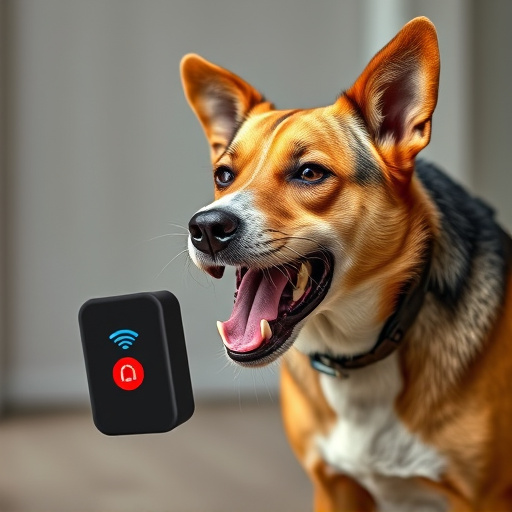Ultrasonic repellents, using inaudible sound waves, offer humane training tools for dogs, with handheld and wall-mounted options catering to distinct needs. Handheld models provide portability, flexibility through sensors/remotes, but demand manual operation; while wall-mounted units supply constant protection, are automated, environmentally friendly, yet lack adaptability. Choosing between them hinges on individual preferences, training locations, and desired level of control, with key factors including frequency range, power, safety features, and cost. Compare "Handheld Vs Wall Mounted Ultrasonic Repellent" options to find the optimal fit for effective, safe dog training against unwanted behaviors.
“Unleash a new approach to dog training with the innovative world of portable ultrasonic equipment. This article delves into the effectiveness of ultrasonic repelents, dissecting their function and how they can be utilized in various settings. We explore the age-old debate: Handheld vs Wall Mounted devices, weighing the pros and cons of each design. Additionally, we guide owners through the process of selecting the ideal ultrasonic equipment, ensuring successful and humane training. Discover the future of canine discipline with our comprehensive analysis.”
- Understanding Ultrasonic Repellents for Dogs: How They Work
- Handheld vs Wall Mounted: Pros and Cons of Each Design
- Choosing the Right Ultrasonic Equipment: Factors to Consider for Effective Dog Training
Understanding Ultrasonic Repellents for Dogs: How They Work
Ultrasonic repellents for dogs have gained popularity as a humane and effective training tool. These devices emit high-frequency sound waves that are inaudible to humans but can startle or deter dogs from unwanted behaviors like barking, jumping on furniture, or chasing small animals. The key to their success lies in the principle of positive reinforcement – when the dog associates the ultrasonic noise with a particular behavior, it learns to avoid it.
Handheld versus wall-mounted ultrasonic repellents offer distinct advantages. Handheld devices provide portability and flexibility, allowing you to move them around as needed, making them ideal for training sessions on the go or in various environments. Wall-mounted options, on the other hand, offer continuous protection in a specific area without the need for constant handling. Both types operate using different mechanisms – handheld models emit sounds triggered by motion sensors or remote controls, while wall-mounted units maintain a consistent frequency to deter dogs within a certain range.
Handheld vs Wall Mounted: Pros and Cons of Each Design
In the ongoing battle against persistent and unwanted animal intruders, both handheld and wall-mounted ultrasonic repellent devices have their merits. Handheld options offer unparalleled convenience and portability; they can be easily carried around, making them ideal for quick interventions in outdoor spaces like gardens or patios. This design also allows users to target specific areas with pinpoint accuracy, as the device can be maneuvered precisely where needed. However, while handheld models excel in versatility, they may require more frequent manual operation compared to their wall-mounted counterparts.
On the other hand, wall-mounted ultrasonic repellents provide a more permanent and automated solution. Strategically placed near entry points or problem areas, these devices operate silently in the background, emitting high-frequency sounds that deter animals without disturbing humans or pets. Once installed, they eliminate the need for constant manual operation, making them cost-effective and environmentally friendly. Yet, their fixed position might limit flexibility, and installation costs could be a factor to consider for homeowners.
Choosing the Right Ultrasonic Equipment: Factors to Consider for Effective Dog Training
Choosing the right ultrasonic equipment is key to successful dog training, especially when dealing with persistent behavior issues like barking or jumping. One crucial distinction lies between handheld and wall-mounted ultrasonic repelants. Handheld devices offer portability, making them ideal for training in various settings – at home, outdoors, or even on travel. They are convenient for quick interventions without permanent installation. On the other hand, wall-mounted units provide consistent coverage within a specific area, like a dog’s designated space or yard, ensuring continuous guidance.
Factors to consider include the device’s frequency range (typically 20-50 kHz), as higher frequencies are more unpleasant to dogs but might be less audible to humans. Range and power settings also matter; longer ranges offer more flexibility, while adjustable power levels cater to different training needs and dog sizes. Additionally, look for devices with safety features like automatic shutoff after prolonged use or specific activation triggers to avoid misuse.
When it comes to choosing the right portable dog training ultrasonic equipment, understanding the dynamics of ultrasonic repellents and considering the handheld vs wall-mounted designs is key. Each option has its pros and cons, making it essential to tailor your selection to your specific needs and living environment. By carefully weighing factors like sound range, power levels, and installation convenience, you can select an effective and efficient ultrasonic repellent that keeps your dog in check without causing discomfort or stress. Whether you opt for a handheld device for on-the-go training or a wall-mounted option for more permanent solutions, the right choice will foster a harmonious living space for both you and your furry companion.
